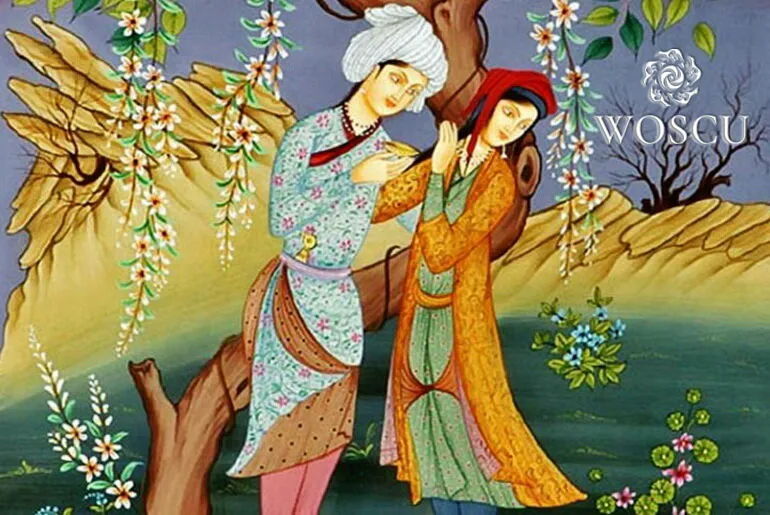It seems that the miniatures of the Quintet were made in the 1650s, anyway before the end of the 1660s, when the “Indian” style became clearly dominant. While studying the female dresses in the miniatures, Zuhra Rahimova noticed that they also have Indian traits, such as the style of the slim-wasted upper coats, cloth with very small patterns, small see-through hats with thin black aigrettes, necklaces of several strands of beads and other features that are absent from the miniatures of the earlier period.
The binding of the Quintet is quite unusual. The inner sides are covered with green-olive leather and decorated with filigree leather net imposed on the gold background, repeating the elements of the standard set including the centrepiece, the corner-pieces, the diamond-shaped pendants and the frame made of cartouches. The difference from traditional Iranian coatings is in the usage of green instead of brown leather, and in colouring the bottom of structural elements exclusively with gold, while Iranian bookbinders often used blue, adding sometimes other colours (green, orange, black). Since on the leather there are no traces of moisture from which the manuscript suffered at one time, the inner sides of the covers can be dated to the time when the manuscript was illuminated, i.e. the 1650s.
You can learn more about the topic in the book-album "Arts of the book in the 15th–17th-century Mawarannahr" (Volume XVII) in the series "Cultural Legacy of Uzbekistan in the World Collections".
The main sponsor of the project is the oilfield services company Eriell-Group.

